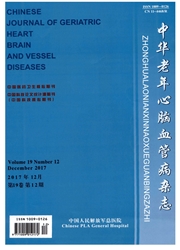

 中文摘要:
中文摘要:
目的评价低氧诱导因子-1α(HIF-1α)基因修饰骨骼肌成肌细胞(SkMs)治疗心肌梗死的可行性及其疗效。方法将71只Wister大鼠采用结扎冠状动脉左前降支制备心肌梗死模型,通过局部注射法将细胞植入心肌梗死区域。其中将制膜成功的42只成活大鼠随机分为假手术组(S0组,6只)、注射培养液组(DMEM组,6只)、移植SkMs组(SkMs组,10只)、移植感染了携带HIF-1α空载体腺病毒的SkMs组(Ad/GFP组,10只)和移植感染了携带HIF-1α基因腺病毒的SkMs组(Ad/HIF-1α组,10只)。术后28天用免疫组织化学法和血流动力学评价治疗效果。结果28天后SkMs组、Ad/GFP组和Ad/HIF-1α组大鼠梗死心肌周围血管新生明显,以Ad/HIF-1α组最为显著(P〈0.05),且胶原沉积最少;SkMs组、Ad/GFP组和Ad/HIF-1α组大鼠左心室收缩功能好转,Ad/HIF-1α组最为显著(P〈0.05)。结论HIF-1α基因修饰后的skMs移植较单纯成肌细胞移植是治疗心肌缺血更为有效的方法。
 英文摘要:
英文摘要:
Objective To assess the feasibility and efficacy of skeletal myoblasts transfected with hypoxia-inducible factor(HIF)-1α gene in treatment of myocardial infarction. Methods Myocardial infarction was created in 42 rats by means of coronary artery ligation. The rats were randomly allocated to sham operation group (n=6) and groups receiving in-scar injection of culture medium (n = 6), skeletal myoblasts (n = 10), skeletal myoblasts transfected with an empty vector (n=10) or active HIF-1α (n =10). After 28 d,left ventricular function was assessed by left ventricular systolic pressure(LVSP) and ±dP/dtmax. Angiogenesis was assessed by immunohistochemistry and reduction of fibrosis was displayed by Picrosirius red stain. Results Injection of skeletal myoblasts alone or combined with either the empty vector or active HIF-1α improved left ventricular function, including increase in the number of capillaries and reduction of fibrosis. The most striking change occurred in the skeletal myoblasts transfected with active HIF-1α group in which +dP/dtmax increased dramatically compared with control group (P〈0.05). Conclusion Induction of angiogenesis is an effective means for potentiating the functional benefits of myoblast transplantation, and HIF-1α can successfully achieve this goal.
 同期刊论文项目
同期刊论文项目
 同项目期刊论文
同项目期刊论文
 期刊信息
期刊信息
